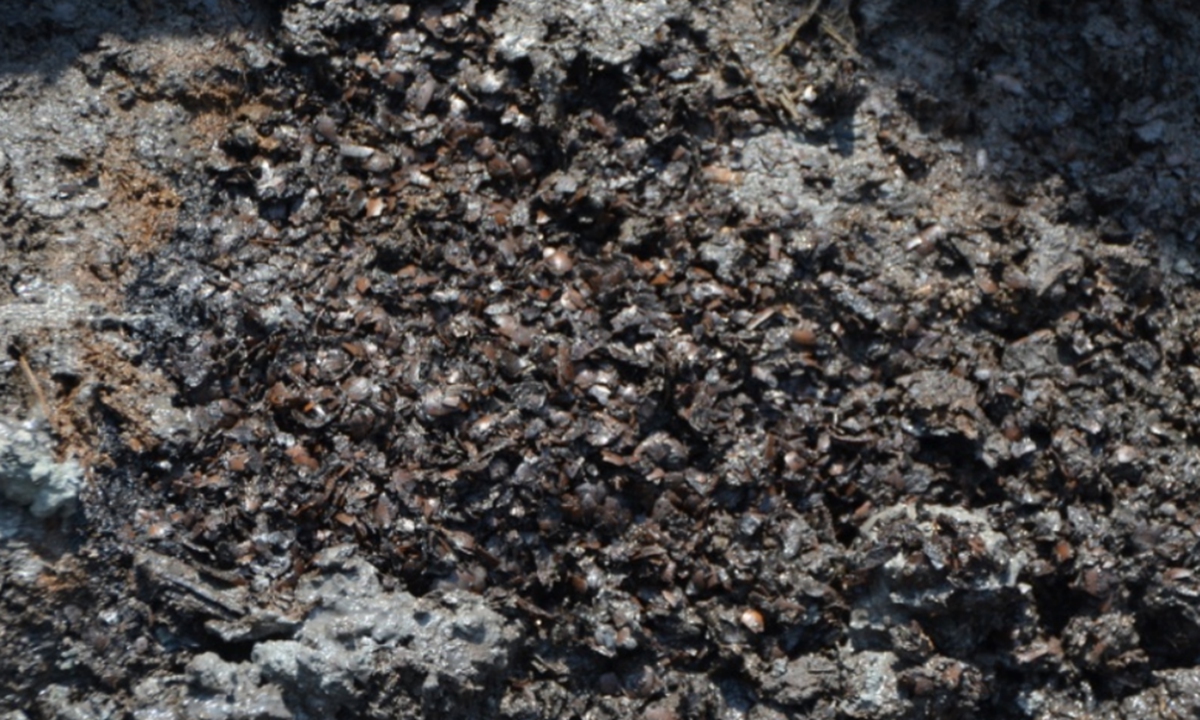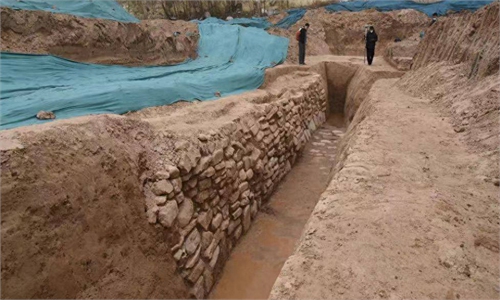ARTS / CULTURE & LEISURE
Acorns for food from 2,000 years ago unearthed at primary school in E.China

Large amount of acorns unearthed at primary school in E.China. Photo: Screenshoot from website
Archaeological excavations at a primary school in Yuyao, East China's Zhejiang Province, have unearthed a treasure trove of historical artifacts dating from the Han Dynasty (206BC-AD220) to the Six Dynasties (from the early Three Kingdoms (220-280) to the end of the Southern Dynasties (420-589) period, according to a Wednesday report by the Xinhua News Agency.
Covering an area of 800 square meters, the ancient settlement has produced relics related to life such as water wells and ash pits, and a variety of ceramic artifacts, providing detailed research materials for studying the drinking water supply of people in the Yuyao River Basin during this period, according to the report.
A total of 65 ash pits, six ash trenches, eight water wells, two groups of column bases, and one wall foundation were found during the excavations.
The discovery of Han Dynasty artifacts included archaeological relics, ash pits and ash trenches. Notably, a large amount of plant remains such as bamboo weaved objects, gourds, peach stones and acorns were found in one of the ash pits. The bottom of the pit was found to be covered with a layer of acorns nearly half a meter thick.
"This indicates that it was a storage pit and that acorns were still one of the sources of food for people in the Han Dynasty," Xu Chao, a researcher who participated in the excavations, told media.
A copper coin cache and a group of water wells are significant discoveries from the Six Dynasties period. The cache contained 796 copper coins. The six water wells, which included brick wells, provide insight into the region's water supply system during that era.
Treasures like bronze lamps and porcelain cups, as well as 1,682 iron coins were also unearthed from the brick wells.
Experts have surmised that the abundance of coins discovered in the cache and the presence of these coins in the water wells likely were local residents' emergency preparations in anticipation of unforeseen disasters.
The layers under the school's playground area were also found to contain a significant number of ceramic fragments and building materials dating from the Han Dynasty to the Ming (1368-1644) and Qing (1644-1911) dynasties.
According to historical records, the primary school was the site of a local imperial academy.

